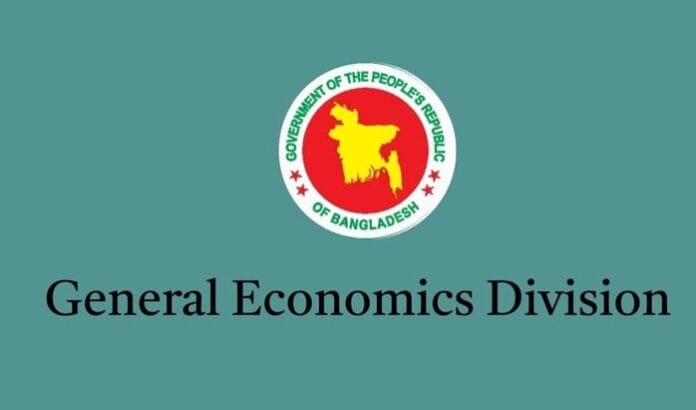Bangladesh’s inflation has begun to ease, but the prolonged tight monetary policy is severely constraining credit growth and private investment, according to the Economic Update & Outlook (October 2025) released on Tuesday by the General Economics Division (GED) of the Planning Commission.
While the report expresses cautious optimism about economic recovery, it warns that the restrictive monetary environment is dampening business expansion and investment appetite, even as key macroeconomic indicators show gradual improvement.
Deposits Surge Amid Restored Confidence and Policy Reforms
The GED notes a significant rise in bank deposits in recent months, attributing it to a combination of factors — government and central bank reforms aimed at rebuilding confidence, reduced interest rates on savings certificates to draw funds into the banking system, and a rapid expansion of e-money and agent banking channels.
Steady remittance inflows and the government’s effort to route cash transfers through the banking system have further bolstered deposit growth, reflecting a renewed preference for formal financial channels among citizens.
Inflation Remains Elevated Despite Signs of Relief
Overall inflation inched up slightly to 8.36 percent in September from 8.29 percent in August, with modest rises in both food and non-food prices. The report highlights that inflation has remained stubbornly high since August 2022 — averaging 9.56 percent over the last 38 months — when a steep 50 percent fuel price hike, following the Russia–Ukraine war, triggered a two-percentage-point jump in consumer prices.
Reserves Strengthen, External Stability Returns
Foreign exchange reserves showed marked improvement in the first quarter of FY2025–26, signaling renewed external stability and improved investor confidence. Gross reserves rose from $25.5 billion in March 2025 to $31.4 billion in September, while BPM6-compliant reserves increased from $20.4 billion to $26.6 billion.
This rebound was supported by higher export receipts, steady remittance inflows, and a moderation in import payments. The central bank’s policy interventions — including managed exchange rate adjustments and curbs on speculative outflows — have helped stabilize the market and reinforce macroeconomic confidence.
Exports Cool After Months of Strong Growth
After a robust run, export earnings softened in September, falling to $3.63 billion from $3.91 billion in August and $4.77 billion in July. The downturn was driven mainly by reduced shipments of ready-made garments (RMG), which still account for more than 80 percent of total exports.
However, non-RMG sectors — such as jute goods, leather, and light engineering — maintained steady growth, offsetting part of the slowdown. Despite the monthly dip, cumulative exports for July–September 2025 outperformed the same period last year, underscoring Bangladesh’s growing competitiveness and efficiency in trade logistics.
Taka Holds Firm Against Dollar
The exchange rate remained largely stable in the third quarter of 2025, with the taka trading between Tk121 and Tk122 per US dollar. The Real Effective Exchange Rate (REER) edged up from 121.2 in June to 127.2 in September, reflecting a mild real appreciation. Analysts attribute this stability to productivity gains, contained inflation differentials, and prudent foreign exchange management by the Bangladesh Bank.
Rice Prices Begin to Fall as Imports Boost Stocks
Rice prices declined by about one percentage point in September compared to August, though inflation for coarse and fine rice varieties remained elevated at around 15 percent. To ensure food supply stability and curb price volatility, the government on 8 October approved imports of 50,000 tonnes of rice from India and 220,000 tonnes of wheat from the United States. An additional 400,000 tonnes of rice is expected to be imported by November to maintain adequate reserves before the next harvest.
The government also reduced the international tender period from 27 days to 15 days to expedite procurement. As of mid-October, food grain stocks stood at 1.55 million tonnes — up 24 percent in distribution from the same period last year.
Rice’s contribution to overall inflation fell to 45 percent in September from 48.37 percent in August, while fish (28.11 percent), meat (10.55 percent), fruits (9.76 percent), and edible oils (5.51 percent) were the other major drivers. Price drops in root crops, vegetables, potatoes, and onions helped ease food inflationary pressures.
Cautious Outlook Ahead
The GED report concludes that although macroeconomic stability is gradually improving — with stronger reserves, stable currency, and easing inflation — the persistence of high interest rates and tight liquidity continues to choke credit expansion and private investment.
It cautions that without a calibrated easing of monetary policy and continued structural reforms, Bangladesh’s growth momentum could face headwinds in the coming months despite signs of recovery in the broader economy.

